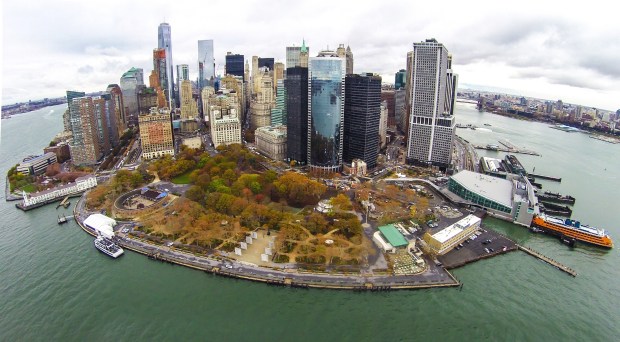The Battery is forever down, but is now getting a facelift.
Mayor Adams announced Monday that downtown Manhattan’s iconic waterfront park will be elevated 5 feet higher as part of the city’s ongoing waterfront resiliency efforts.
“No one has forgotten the devastation of Hurricane Sandy 12 years ago. Every day, we’re in a race against the next superstorm,” Adams said during a groundbreaking at the park. “We have to build a safer, stronger and more sustainable city.”
The new construction project aims to rebuild and raise the Battery’s wharf promenade at the tip of Manhattan to protect against storm-surge flooding and rising sea levels caused by climate change. It’s expected to be complete by 2026.
City officials estimate that, when finished, the upgrade will help protect 100,000 residents and 12,000 businesses.
It’s one of several public works projects underway in lower Manhattan to protect against the sort of flooding that gripped the city when Superstorm Sandy paralyzed downtown in 2012.

As part of that broader effort, which is projected to cost a total of $1.7 billion, the city completed work on a 45-ton storm gate on the Lower East Side in 2022 and is continuing to construct storm walls along the East River. Those walls are also expected to be finished in 2026, according to city Environmental Protection Commissioner Rohit Aggarwala.
Aggarwala said Monday that aside from improving resiliency on Manhattan’s southernmost tip, the Battery project will get much of its construction materials delivered by boat, which will limit the need for trucks to make deliveries and thus reduce greenhouse gas emissions tied to the job.
“A lot of the material here is being reused on site. We’ve got special equipment that protects from noise and air pollution,” he said. “And a lot of the material was brought here by water rather than by truck, reducing the overall impact of this construction project on the city and on the environment.”
